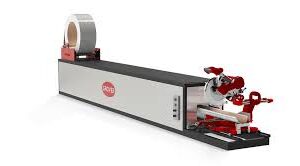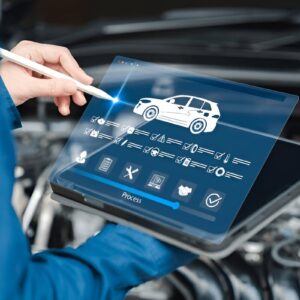In today’s data-driven world, choosing the right Server Hard Drives is essential for every business, from startups to large enterprises. The foundation of every server environment relies on stable, fast, and high-capacity storage solutions. Whether you’re upgrading your company’s infrastructure or building a new server from scratch, investing in reliable IT Hardware like Server Hard Drives is a top priority.
This comprehensive guest post explores everything about Server Hard Drives, their types, performance benefits, compatibility with Computer Hardware, and why they matter for business continuity and performance.
Introduction to Server Hard Drives
Server Hard Drives are storage devices specifically designed for use in servers. Unlike consumer-grade hard drives, server drives are built for high endurance, better reliability, and 24/7 operation. These drives often have features like error correction, higher RPM, better caching, and thermal tolerance, which are essential in business-critical environments.
As part of core IT Hardware, these drives directly impact data accessibility, server uptime, and overall network efficiency.
Importance of Server Hard Drives in IT Hardware Ecosystems
In any modern IT setup, Computer Hardware forms the skeleton, and Server Hard Drives function as the heart pumping data across systems. With the exponential rise in big data, artificial intelligence, and cloud-based services, storage needs have dramatically shifted. Businesses now need drives that can:
-
Store terabytes or petabytes of data
-
Deliver rapid read/write speeds
-
Operate under constant load
-
Securely manage data transfers
Choosing the right server drive is not just a storage decision—it’s a critical IT strategy.
Types of Server Hard Drives
Depending on your use case and infrastructure, you’ll typically encounter three primary types of Server Hard Drives:
1. SATA Server Hard Drives
Serial ATA (SATA) hard drives are commonly used in entry-level servers due to their affordability and high storage capacity. They offer decent performance, especially for non-mission-critical workloads such as archiving and backups.
Advantages:
-
Cost-effective
-
Higher capacity options
-
Ideal for read-intensive applications
Limitations:
-
Slower than SAS and SSDs
-
Lower endurance
2. SAS Server Hard Drives
Serial Attached SCSI (SAS) drives are a step up from SATA, offering better performance, reliability, and error correction. They are typically used in high-transaction environments such as databases and enterprise applications.
Advantages:
-
Faster data transfer rates (12Gbps and up)
-
Enhanced durability and error recovery
-
Longer lifespan under heavy workloads
Limitations:
-
More expensive than SATA
-
Slightly more power consumption
3. SSD Server Drives (Enterprise Solid State Drives)
Solid State Drives (SSDs) offer the best performance in terms of speed and latency. While traditionally more expensive per gigabyte, SSD prices have dropped, making them a viable choice even for small and mid-sized businesses.
Advantages:
-
Lightning-fast performance
-
No moving parts = more durability
-
Low latency and quick boot times
Limitations:
-
Higher cost
-
Lower write endurance (for consumer-grade SSDs, though enterprise SSDs mitigate this)
Key Features to Consider in Server Hard Drives
When choosing Server Hard Drives as part of your Computer Hardware inventory, consider the following:
1. Storage Capacity
Depending on the applications—whether you’re handling large databases, media files, or virtual environments—select a drive that meets your current and future storage needs.
2. Performance (RPM and Data Transfer Rate)
Drives with higher RPM (like 10K or 15K RPM SAS drives) offer better read/write speeds. SSDs, of course, surpass traditional HDDs in performance metrics.
3. MTBF and Reliability
Mean Time Between Failures (MTBF) indicates a drive’s durability. For server environments, look for MTBFs in the millions of hours.
4. RAID Compatibility
Ensure that the drive supports RAID configurations to enhance performance and redundancy.
5. Hot Swappability
Being able to replace or upgrade drives without shutting down the system is critical for enterprise operations.
Server Hard Drives vs Consumer Hard Drives
While consumer hard drives may seem similar, there are stark differences that affect long-term performance in business environments.
| Feature | Server Hard Drives | Consumer Hard Drives |
|---|---|---|
| Operating Hours | 24/7 | 8–10 hours/day |
| Error Recovery | Advanced ECC, CRC checks | Basic error correction |
| Vibration Tolerance | High | Low |
| Warranty | 3–5 years | 1–2 years |
| Cost | Higher | Lower |
For critical data and applications, always opt for Server Hard Drives tailored to enterprise workloads.
Integrating Server Hard Drives into Your IT Infrastructure
Your IT Hardware stack must be built on compatibility and efficiency. Here’s how to ensure seamless integration:
-
Compatibility Check: Match the interface (SATA, SAS, NVMe) with your server motherboard and RAID controller.
-
Firmware Support: Enterprise drives come with specialized firmware for enhanced operation with RAID configurations and server management tools.
-
Power and Cooling: Server-grade drives may need better cooling. Ensure proper airflow within your server chassis.
Use Cases of Server Hard Drives in Business Environments
1. Data Centers
With hundreds of servers running simultaneously, data centers rely on enterprise-grade hard drives with hot-swappable trays and failover support.
2. Web Hosting Companies
High uptime and quick access are crucial. SSD-based server drives ensure rapid delivery of content to end-users.
3. Financial Services
Real-time transactions and data analytics require fast, reliable storage solutions—often fulfilled by SAS or NVMe drives.
4. Medical Industry
Healthcare systems store massive imaging and patient data that need reliable, secure Server Hard Drives.
Leading Brands Offering Server Hard Drives
Several manufacturers dominate the Computer Hardware industry with high-performance server drives:
1. Seagate
Offers a range of SATA, SAS, and SSD drives optimized for enterprise and cloud environments.
2. Western Digital (WD)
WD’s Gold and Ultrastar lines are renowned for high endurance and large capacities.
3. Toshiba
Provides cost-effective SAS and SATA server drives with decent performance for mid-tier operations.
4. Samsung
Specializes in high-speed enterprise SSDs with top-tier performance and reliability.
5. Intel
Known for their NVMe SSDs tailored for data centers and mission-critical workloads.
The Role of Server Hard Drives in Modern IT Strategy
Data is now a business asset. Organizations spend heavily on IT Hardware to ensure that their servers, storage devices, and networks remain functional and secure. The right Server Hard Drives enhance:
-
Data Accessibility
-
Disaster Recovery Plans
-
Performance Optimization
-
Scalability for Growth
-
Data Security and Compliance
As businesses evolve toward hybrid and cloud models, local server drives still serve as the backbone for many operations.
Server Hard Drives for Virtualization and Cloud
Virtualized environments place tremendous I/O demands on storage systems. Enterprise SSDs and high-RPM SAS drives handle such loads efficiently.
Best Practices:
-
Use SSDs for virtual machines and high-performance databases.
-
Combine with RAID 10 for speed + redundancy.
-
Monitor IOPS (Input/Output Operations Per Second) to prevent bottlenecks.
Cost vs Performance: Striking the Right Balance
While SSDs offer speed, not all businesses need ultra-fast drives for every task. Many find hybrid setups to be the best solution:
-
SSD for OS and mission-critical apps
-
SAS for frequently accessed data
-
SATA for backups and archival data
This mix allows you to optimize your IT Hardware budget without compromising on performance or reliability.
How to Maintain Server Hard Drives
To ensure longevity and performance of your Server Hard Drives, adopt these practices:
-
Regular Backups
-
Firmware Updates
-
Temperature Monitoring
-
Periodic Health Checks with SMART Tools
-
Replacement Before Failure (based on usage stats)
Proper maintenance not only prolongs the life of the drive but also protects your critical business data.
Future of Server Hard Drives
With technology trends like NVMe over Fabrics (NVMe-oF), PCIe 5.0, and cloud-native storage models, server drives will continue to evolve.
Upcoming trends include:
-
AI-powered data caching
-
Self-healing drives
-
Greater use of QLC NAND in SSDs
-
Increased adoption of open-compute server storage designs
Despite the cloud, physical Server Hard Drives remain critical for edge computing, compliance-sensitive workloads, and hybrid environments.
Final Thoughts
Choosing the right Server Hard Drives is not a one-size-fits-all process. Whether you’re building your own server or optimizing an existing IT infrastructure, understanding how different types of server drives work within your broader Computer Hardware ecosystem is essential.
By balancing performance, capacity, and cost, businesses can ensure their IT Hardware supports long-term success. Always choose enterprise-grade storage that aligns with your operational goals.
For organizations that prioritize uptime, speed, and data integrity, Server Hard Drives are not just components—they are strategic investments.



